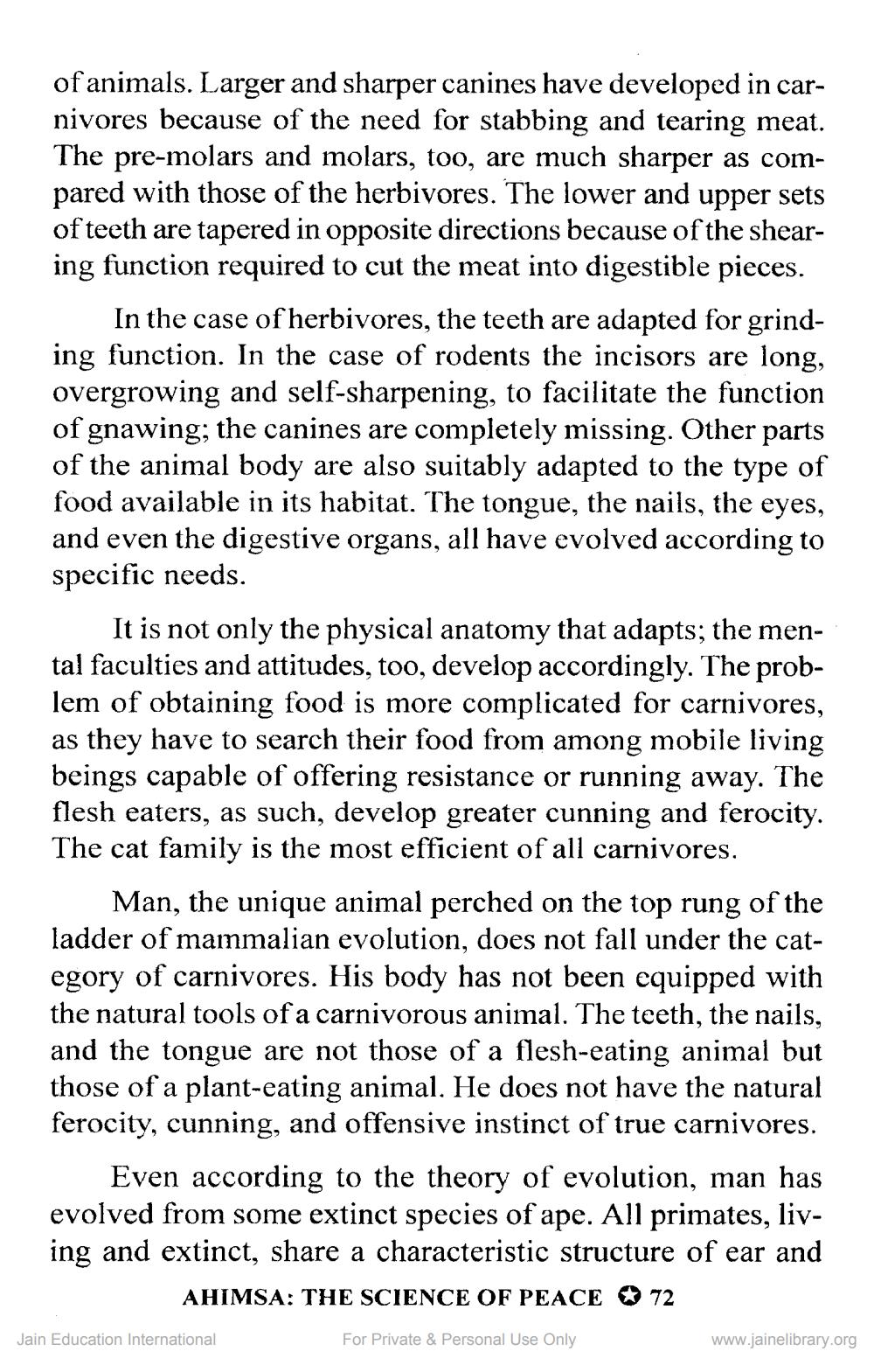________________
of animals. Larger and sharper canines have developed in carnivores because of the need for stabbing and tearing meat. The pre-molars and molars, too, are much sharper as compared with those of the herbivores. The lower and upper sets of teeth are tapered in opposite directions because of the shearing function required to cut the meat into digestible pieces.
In the case of herbivores, the teeth are adapted for grinding function. In the case of rodents the incisors are long, overgrowing and self-sharpening, to facilitate the function of gnawing; the canines are completely missing. Other parts of the animal body are also suitably adapted to the type of food available in its habitat. The tongue, the nails, the eyes, and even the digestive organs, all have evolved according to specific needs.
It is not only the physical anatomy that adapts; the mental faculties and attitudes, too, develop accordingly. The problem of obtaining food is more complicated for carnivores, as they have to search their food from among mobile living beings capable of offering resistance or running away. The flesh eaters, as such, develop greater cunning and ferocity. The cat family is the most efficient of all carnivores.
Man, the unique animal perched on the top rung of the ladder of mammalian evolution, does not fall under the category of carnivores. His body has not been equipped with the natural tools of a carnivorous animal. The teeth, the nails, and the tongue are not those of a flesh-eating animal but those of a plant-eating animal. He does not have the natural ferocity, cunning, and offensive instinct of true carnivores.
Even according to the theory of evolution, man has evolved from some extinct species of ape. All primates, living and extinct, share a characteristic structure of ear and
AHIMSA: THE SCIENCE OF PEACE 72
Jain Education International
For Private & Personal Use Only
www.jainelibrary.org




